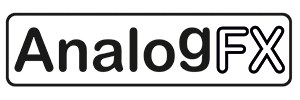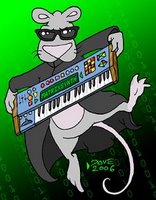Showing posts sorted by date for query Get It In Writing. Sort by relevance Show all posts
Showing posts sorted by date for query Get It In Writing. Sort by relevance Show all posts
Thursday, November 13, 2025
100 Oberheim Expander/Matrix12 single FX patches by Arthur Springer
video upload by Really Nice Audio
"So whilst on soak test I came across this crazy bank:
Notes from the .txt
ART SPRINGER STRIKES AGAIN (free)
Reviewed by Mike Metlay
All right, gang, I know what you're expecting in this space, so I'll oblige you and get it over with. Ready? Here goes: "WAHOOLAZUMA! Everybody's favorite twisted puppy is back from the audio torture chamber, and he's brewed up the most brain-slashing package of monstrous elektronoyze EVER! This stuff's great for warping your brain patterns, killing your cat, etc..."
Okay. Happy now? Good, now let's get serious. I heard from Art recently that he didn't get a terribly good response to his first mailing, and that few, if any, XUG members looked him up for his second set of patches
He seemed in a pretty good humor about it, but I couldn't help wondering if my presentation of his patch set didn't scare a lot of people away just by the wording. So, with a new patch set from Art (more diverse than the first two) in hand, I'd like to try again.
One of the most unhealthy trends I see in today's patch-editing software is the patch randomizer, that cute but overused utility that generates random patches at the click of a mouse. Literally thousands of these random patches are being sold by unscrupulous hackers as "original sounds," and a whole new generation of MIDI morons is springing up (pardon the pun) whose idea of "good programming chops" is the ability to tweak a randomly generated sound into something that (almost) works. No program of this type exists yet for the xpander, and I'm glad of it: the lack of computer-generated garbage on the market forces the user community to seek one another for new ideas, rather than some electronic I Ching. We come together in this Group to share ideas and learn from one another and I believe that studying another human being's work beats watching a computer coughing up random numbers. Which brings us to the music of Art Springer.
In my opinion, these patches are important. VERY important. I get so enthused about Art's work because I see in him a reflection of my college days, when I puttered about with ARP and Buchla modular monsters creating sounds for the sheer joy of it, putting together tonalities never before heard on Earth rather than trying to make a realistic shakuhachi. This was, and often still is, the meat and potatoes of electronic music to me. And when I hear Art telling me that people- Xpander users!-are returning his work because it's "too weird," I know something's wrong. The Xpander isn't a sampler or a digital piano. It's not an imitative instrument by nature. It's a powerful, multiply interfaceable modular synthesizer with a great deal of flexibility. Art Springer takes a stance on its use that no other Group member has had the courage to try: using its Power as a CV percussion device to enhance the sounds of his more traditionally oriented synths. (By the way, Lionel and I are big fans of his music ... it's not as inaccessible as you might think, and the odd tonalities make his dance pieces a lot of fun.) This is a new idea to a lot of you, and I don't blame you for being frightened. But it's better to learn from someone whose ideas differ from yours than to convince a computer to feed you something safe. I'd like to suggest something simple to start with: get one of Art's sound sets, trigger your Xpander with your drumbox, and try writing music with these sounds as part of the atmosphere rather than conventional drum noises. Or do something completely different. The important thing is to try to expand (hm) your horizons to something new. These sounds of Art's do take getting used to, but I think you'll learn a lot from them. Trust me."
Tuesday, October 14, 2025
Nervy jam w/ Torso T-1, Moog Matriarch, Micromonsta 2, Drumbrute Impact
video upload by Jay Hosking
"Please support my work on Patreon: / jayhosking
A live synthesizer jam performed entirely on hardware.
After my recent work with the S-4, Torso reached out to see if I'd like to borrow the T-1 for a couple of months, with no expectations on me making a video or doing anything publicly with it. I found the T-1 to be an exceptional sequencer for noodling around, for both better and worse. Better: you quickly start writing song ideas you wouldn't otherwise come up with, and arranging multiple parts across different instruments is extremely fast. Worse: it was challenging for me to shape the output into a finished song; to get to the finish line, I had to work against (or ignore) some of the T-1's best features.
Together, it makes me think the T-1 would shine most as an idea generator with another sequencer (e.g. the DAW), where you could take output from the T-1 and then further refine it. Really enjoyed my time with it, though.
This also marks the return of the Moog Matriarch. I had sold off the Matriarch because it was too large for my smaller studio, or maybe too large to justify keeping around as a mono device for the table. Then I got a larger studio and immediately missed it. Happy to have it back, even if it still feels too big for what it does.
As for the rest, well, they do what they do well. The Micromonsta 2 is a great synth for filling in the gaps, and is bitimbral; the Arturia Drumbrute Impact is a superb drum machine for live performance; and the Chroma Console is a perfect little sweetener, here taking a mono instrument into the stereo space.
Performed and recorded live to a multitrack output, with EQ, compression, and limiting on the master.
Thanks for listening.
https://jayhosking.bandcamp.com"
Monday, September 22, 2025
Polyend Tracker Mini Aluminum | Three songs in metal and glass
video upload by Jay Hosking
"Please support my work on Patreon: / jayhosking
Three drum & bass-ish songs performed live with the Polyend Tracker Mini Anniversary edition.
I've been a fan of Polyend's Tracker line for a while, and the newest iterations—with stereo samples and internal synths—have basically everything I want in one package. So when Polyend announced they were making a Tracker Mini out of metal and glass, with vastly improved buttons, I pre-ordered one for myself. The weakest part of the Mini was definitely the build quality, and I loved the idea of a premium portable Tracker.
A little later, Mitch from Polyend reached out and asked if I wanted to get my Tracker Mini Aluminum early, in hopes that I could show it to others. Seemed like a good excuse to create a bunch of music, and hopefully allow others to see what the device was like before launch.
So here are three songs on the Tracker Mini Aluminum. I started by making my own drum breaks and slicing them in the Mini. The drum one-shots and a lot of the melodic content came from Polyend's own Palettes storefront, which has some great sample food for writing. The rest of the melodic ideas came from a recent community sample pack we made for my Patreon, entitled "Loop Food". Altogether, I was up and writing songs very fast.
Once I had the Tracker Mini Aluminum, I started to figure out the arrangements. Song mode is another section where I really appreciate it over other devices; it's got quirks, but it's fast and powerful and helps me get to the finish line.
I could sort of say that about the Polyend Tracker line-up in general: it has quirks, it's occasionally fickle, but the firmware is relatively mature and it has a great combination of sound, power, and performability.
Thanks for listening.
Recorded multitrack via the Tracker Mini's USB output. Some additional sweetening on the internal synths (e.g. chorus on the pads, where noted). EQ, compression, and limiting on the master.
00:00 - Song 1
05:12 - Song 2
09:16 - Song 3
https://jayhosking.bandcamp.com"
Friday, August 01, 2025
NAMM Museum of Making Music ARP: The Innovator, The Instruments, The Impact. Update


This is a follow-up to this post.
Additonal details on the upcoming two day event via The Alan R Pearlman Foundation follows:
ARP: The Innovator, The Instruments, The Impact Opening August 9
We invite you to step into the world of innovation with our new exhibition "ARP: The Innovator, The Instruments, The Impact." The impact of ARP synthesizers and the legacy of their innovator Alan R. Pearlman (1925-2019) was vast and deeply influential. From progressive rock and jazz to pop, film, and experimental music, ARP instruments helped shape the sound of a generation and inspired countless artists.
Curated by Brian Kehew, the exhibition brings together a stunning array of instruments, vintage media, and behind-the-scenes insights.
Guest Curator: Brian Kehew
Brian Kehew is a Los Angeles-based producer, engineer, and co-author of Recording The Beatles. Kehew’s deep expertise as a synthesizer programmer and performer with artists such as The Who and The Moog Cookbook brings a uniquely informed perspective to this presentation.
Exhibition Events
Day 1: Opening Reception and Concert Celebration
Saturday, August 9 @ 6 pm
Join guest curator Brian Kehew and Dina Pearlman-Ifil, daughter of Alan R. Pearlman, for an in-depth look at the exhibition. Stay for special performances by renowned synth artists Rupert Greenall, Robin Hatch, and Steve McQuarry. This event is free for museum members, and $30 for non-members.
Thursday, July 10, 2025
The Crow Hill Company Introduces POCKET STRING no-barrier-to-entry-styled string library plug-in
video upload by CROW HILL XTRAS
Press release follows:
"The Crow Hill Company creates POCKET STRINGS as no-barrier-to-entry-styled string library plug-in produced without compromise… with added ‘synthy spice’
EDINBURGH, UK: having recently rebranded itself with an aesthetic that truly realises company co-founder and composer Christian Henson’s heartfelt dream of encouraging people to make music and help them on their journey, regardless of whatever point they were at and wherever their journey began, The Crow Hill Company continues its journeying into ‘Season Two’ as a producer of resources and tools to protect, inspire, support, and provide opportunities for music-makers the world over, believing that music is, and should remain, a wholly human experience, one that is by far one of the most powerful forms of expression, escape, comfort, and remembrance, of which its newly-created POCKET STRINGS — styled as a definitive string library plug-in that opens the doors to collaboration between anyone anywhere, creatively combining live cinematic orchestral recordings with some rarefied vintage synth classics made to measure for added body, depth, and character — readily represents the cornerstone of this ethos, as of July 10…
“A string library that’s accessible to all without compromise — a distillation of the last 25, nearly 30, years that I’ve been working as a media composer, which means that I write music for film, TV, and computer games, giving you the very basic necessities to write pro-end string arrangements. Whether that be adding to productions, songs, collaborating with others, or, indeed, creating professional film scores — whether that be to demo for an orchestra to play, or, indeed, to go to broadcast, there’s been no compromises here. But accessibility is the key — not just with the price point, but with usability.” So says Christian Henson himself, perfectly positioned — as The Crow Hill Company’s original founder, forging forward by building upon his extensive experience gained from founding Spitfire Audio to originally offer a palette of sounds he had created for his own use as a professional composer to his film world colleagues by invitation only, though the rest, as they say, is history — to proudly introduce POCKET STRINGS as a never-tried-before strings library plug-in that aims to bring broadcast-grade string possibilities to everyone.
Thursday, June 26, 2025
Faded photograph | Tranquil ambient with Rhodes piano, Prophet VS, Alvarez 12, and FM3 pedal
video upload by MIDERA
"It's been a month. As I said, my wife lost her job in May. We hoped she would get a job that seemed like a great fit, someone had reached out to her and said she'd be perfect. Guess they didn't think so later. Oh well.
I did manage to extract all the audio from my old Roland VS-840GX. I kind of wish I was still recording using that thing, it was so good for just sitting down without a screen and recording whatever I wanted, but using a DAW is just so much nicer.
I had half written the rhodes part on this track, when I ended up recording something else that I plan to put into a rock track (yes, I am trying to get back into writing that type of music). Came back to this last night and recorded this, with some changes. Funny how walking away and coming back to something helps you change it for the better.
I used the Fractal Audio FM3 as a looper to loop the first part and then played everything else over it. The Rhodes and Prophet VS was performed in one go, the guitar was done in a second round with Eventide Blackhole VST for reverb.
Well, I hope you enjoy this - my first track written in a month."
Tuesday, June 24, 2025
Torso S-4 album | IDM/DnB/glitch | Not even a poet can speak the whole truth
video upload by Jay Hosking
"An album of IDM, Drum & Bass, and glitchy electronic music, for the more intense parts of your day. Songs were composed and performed on the Torso S-4, with additions and polish added in the box.
Buy the album here: https://jayhosking.bandcamp.com
00:00 - Imaginary countries
03:48 - Dreams must explain themselves
07:21 - Very far away from anywhere else
12:24 - The farthest shore
17:28 - The unreal and the real
20:57 - The word for world is forest
26:06 - Dancing at the edge of the world
29:33 - Always coming home
I recently posted a workflow video about why the Torso S-4 was an inspiration to me. Here's the proof.
I started sketching on the S-4, and before I knew it, I found myself writing song after song after song. Most of the songs needed a little more after the fact (the four tracks of the S-4 are not enough for full arrangements, for me), but the inspiration of the S-4 was enough to get me performing even before the song was finished.
So here you have eight songs, performed on the S-4, and then added to in the box as necessary to get them to the finish line. Many of the samples come from my Patreon community's sample pack from last year; a number of the samples come from a DJ Crystl sample pack, especially on the Drum & Bass tracks (2, 5, 7); and some of the samples are from the factory sounds.
Overall, this album is a showcase of how and why hardware can inspire, can surprise, and can lead to performance. It's wonderful to use hardware synths and drum machines, but sometimes audio loops and mangling is where the performance really comes alive. I'm extremely proud of this record and how spontaneous, energetic, and cohesive it is.
Thanks for listening."
Monday, March 24, 2025
Roland RS-505 49-Key Paraphonic Synthesizer
Note: links to listings are affiliate links for which the site may be compensated.
via this Reverb listing
via this Reverb listing
Friday, February 28, 2025
Embrace of nothing | Sequential Prophet 10, Prophet 12, Nord Drum 2, and Toraiz Squid downtempo
video upload by MIDERA
"I finally scanned in over 7700 photos of my parents and their lives. It was so nice to see them again, happy, exploring. Somewhere in there it all changed, but they still looked and seemed happy. So many times I'd see a photo and just stare at it for a few minutes, as though I'd been hit by something. Like seeing them arrive at their first motel on their honeymoon. Or seeing photos from the 70s and then the 00s when they went to the same cabin. It was clearly a world that just hung so close to me, but I never saw it. By the time I could get to know them in this capacity - they were both gone.
Now that I have my studio back - I can finally start writing music again. I pulled out the Cirklon. As you can see, I didn't use the Cirklon here. My goodness that thing just antagonizes me at every turn. I know I need to give it more time, but after two days using it, I put it away and within an hour, I had something I was enjoying making and playing.
Toraiz Squid: Sequencing
Prophet 12: Bells
Prophet 10: Pads
Nord Drum 2: Drums"
Thursday, January 23, 2025
"More than just an audio interface": Bitwig launches its first hardware product at NAMM 2025
video upload by MusicRadar Tech
"German DAW-maker Bitwig has revealed its very first hardware product - Bitwig Connect 4/12. Ostensibly a 4-in and 12-out CV and MIDI-enabled audio interface, Bitwig states that its debut hardware product is 'far more than just an audio interface'… We caught up with them at NAMM 2025 to find out more."
Introducing Bitwig Connect 4/12
video uploads by Bitwig
via Bitwig
Bitwig Connect 4/12
More Than An Audio Interface
Bitwig Connect 4/12 is a class-compliant, 4‑in/12‑out CV- and MIDI‑enabled audio interface with monitor- and DAW-control functionalities and a unique Bitwig Mode.
Your Ultimate Studio Sidekick
Connect is a three-in-one audio/MIDI interface, monitor and DAW controller. Six mode buttons allow its 360°, touch-sensitive dial to adjust interface parameters or control software. It can set input gain, regulate the volume levels for two sets of monitors and your headphones, or even move the playhead and control any Bitwig Studio parameter with exceptional resolution.
The front panel gives you immediate visual feedback, with accurate input and output meters and a ring of 32 RGB LEDs around the dial to visualize parameter values and automation data. Plus, gain settings are accessible and saved within Bitwig Studio, so you can pick up right where you left off next time you open it.
CV Connects the Best of Both Worlds
With two DC-coupled inputs and four outputs easily accessible via 3.5 mm minijacks directly on the front panel, Connect is a superior choice for musicians with CV-enabled hardware. That means it goes both ways: To external devices from Bitwig Studio or other programs, and from hardware sequencers and modulation signals into the software realm.
Thanks to factory calibration, Connect plays pitch-perfect and without offset with Bitwig Studio right out of the box. And since jacks can also be used for audio signals, they can act as additional ins and outs for line-level signals, making them useful to all types of users.
Bring Bitwig Studio to Life
Connect's unique Bitwig Mode puts Bitwig Studio at your fingertips with DAW controller functionalities. Seamless integration makes writing automation, fine-tuning settings, and navigating the timeline in Bitwig Studio with Connect's main dial intuitive and precise. Get quick access to any control with the high-resolution dial by hovering over it with your cursor, and lock a selected parameter to Connect by double-tapping. The LED ring indicates its current task by matching the color of the parameter or track in Bitwig Studio so you'll never get lost.
You can find additional details at https://www.bitwig.com/connect/
Monday, December 23, 2024
Generative Beats Using Real Yamaha Chips: ARCANE
video upload by SPHERICAL SOUND SOCIETY
"ARCANE is a generative synth that lies somewhere between a synth, a sequencer and a drum machine, depending on how you interact with it.
It is based on an authentic Yamaha YM2413 FM chip; the one used in some arcade coin ops, MSX and in the japanese version of the Sega Master System.
You can order it here:
https://www.tindie.com/products/jc204...
To control it it has 6 potentiometers and 3 buttons. The pots are:
-TEMPO. It controls the tempo/speed.
-BASE REGISTER. It determines if the machine is more musical or glichy. Better left it around 3 o'clock position for more musical results. Turning it to the center and left side produces more noisy/glitchy and chaotic outputs. You have been prevented!
-INTENSITY. The higher this pot, the more amount of notes and percusions sounding. This is a very playable way of alter the generative composition by transitioning between the simple and complex sound patterns.
-SEQUENCE. It let you browse between sequences. Turn it to select random patterns.
-DISPERSION. the higher this pot, the most registers that we are writing on the chip, so the sequences get more complex and chaotic. This and intensity are a very playable pair and both are related. Once you tuned something that you like, try to do variations playing this pot and INTENSITY one.
-COMBINATION. It multiplex, demultiplex and recombines sequences, keeping the output related but always fresh and different. At minimun it produces a 16 step sequence. At maximun it produces a 8 steps sequence. Between is where the magic happens, and it recombines and produce generative patterns via bitshifting and logic operations of the sequences.
It has 3 buttons, Left, Right and Reset. Reset is located in the arduino and is self explanatory. If you have been playing in the BASE REG pot center/left side and it has turned too chaotic or noisy, just put BASE REG pot around 3 o'clock and press reset. It will come back to more musical landscapes.
Left and Right buttons are to be determined as the firmware is still in development.
It has Clock In and Clock Out so you can synch it with external gear. To accept external clock set TEMPO pot at minimun."
Friday, December 13, 2024
Insights In Sound - Tom Oberheim, Inventor/Synthesizer Pioneer - Part Two S17 E2
video upload by Get It In Writing
"Part Two of our in-depth conversation with the legendary Tom Oberheim."
Part One here
Friday, December 06, 2024
Insights In Sound - Tom Oberheim, Inventor/Synthesizer Pioneer
video upload by Get It In Writing
"He's one of the founding fathers of electronic instruments, a legendary name in synthesizer history, and a most humble and unassuming genius. We sat down with Tom Oberheim to learn about his personal history, and that of the company that bears his name. Part One of our two-part interview."
Part Two here
Wednesday, November 20, 2024
Instruō - tràigh [Signature Edition]
video upload by Instruō
Update: DivKid video added below.
"Hello!
Jason here.
Thank you for watching this video :)
This Signature Edition limited re-release of the tràigh low-pass filter module is available for purchase direct from Etsy:
https://www.etsy.com/uk/listing/18233...
I am producing a limited batch which will be available for purchase while stock lasts.
This revised module was developed as a creative side project over the past month or two as a means of dealing with the unfortunate situation of having a very large pet greyhound with a relatively large diagnosis of cancer.
Winston was confirmed to have a stage 2 soft cell sarcoma earlier this year. He underwent a surgery on September 24th during which the tumour was successfully removed. (He has recovered very well and quickly!)
Due to the location of the sarcoma there is a high likelihood of cancer cells remaining at a microscopic level. If left unchecked they will likely return as a tumour with a chance of metastasising.
Winston began a 4 week treatment of radiotherapy on November 4th.
As of writing this we are now past the half way point and he is responding very well with no significant side effects presenting.
Each treatment requires full general anaesthetic, so I have a very dopey boy every Monday, Wednesday and Friday for the entire month of November.
The vets do provide him with some roast chicken each session when he wakes up. So he seems quite happy with his current unusual routine.
Monday, October 07, 2024
Craig Knudsen plays the Yamaha Genos2 - Sessions from The Gallery
video upload by Kraft Music
"Great bundle deals on Genos2:
https://kraftmusic.com/collections/ya...
Craig Knudsen plays the Yamaha Genos2 arranger workstation in The Gallery at Kraft Music.
Yamaha Genos2 represents the leading edge in Yamaha Keyboard technology in content and hardware. It's the foundation on which future Yamaha keyboards will be built. If you've ever dreamed of playing your favorite songs, writing new music, or arranging professionally produced tracks, Genos2 is the most comprehensive tool in your arsenal. Genos2 gives passionate DIY musicians seeking perfection the highest quality Voice & Style content with unmatched real-time control for entertaining and performing.
Get more for your money with an exclusive Yamaha Genos2 bundle from Kraft Music. These package deals include the accessories you'll need to get the most out of your new synth, all for one low price. If you have any questions, please contact us. Our knowledgeable sales advisors will be happy to assist in choosing the bundle that's right for you!"
Thursday, September 12, 2024
Introducing Roland AIRA Compact P-6 Creative Sampler
video upload by RolandChannel
"The P-6 Creative Sampler joins the AIRA Compact gang, packing legendary Roland sampling technology into a compact, user-friendly gadget. Seamlessly blending classic sampling techniques with granular sound design, the instrument features a built-in mic and advanced sequencer in a lightweight, rechargeable package. With a versatile stash of hands-on FX and intuitive controls, the P-6 delivers unparalleled portable sampling power.
Watch Dustin Good dive into the depth of features and connectivity within this mini roving recorder:
00:00 Intro
01:43 Layout
02:05 Sampling Settings
02:41 Sampling Examples
03:46 Chop
04:05 Step Sampling
04:46 Granular
05:39 Pattern Sequencer
06:47 FX
07:24 Resampling
07:56 Connectivity/AIRA Compact Series"
Saturday, September 07, 2024
Yamaha Genos2 Arranger Workstation - All Playing, No Talking
video upload by Kraft Music
"Great bundle deals on Genos2:
https://kraftmusic.com/collections/ya...
Adam Berzowski jams on the Yamaha Geno2 arranger workstation, showing a variety of sounds and styles.
Yamaha Genos2 represents the leading edge in Yamaha Keyboard technology in content and hardware. It's the foundation on which future Yamaha keyboards will be built. If you've ever dreamed of playing your favorite songs, writing new music, or arranging professionally produced tracks, Genos2 is the most comprehensive tool in your arsenal. Genos2 gives passionate DIY musicians seeking perfection the highest quality Voice & Style content with unmatched real-time control for entertaining and performing.
Get more for your money with an exclusive Yamaha Genos2 bundle from Kraft Music. These package deals include the accessories you'll need to get the most out of your new synth, all for one low price. If you have any questions, please contact us. Our knowledgeable sales advisors will be happy to assist in choosing the bundle that's right for you!"
Monday, July 01, 2024
Midicake Arp and The One Finger Jam (no talk)
video upload by Richard DeHove
"Something's wrong if you're making music but not having fun. It should all be fun. But writing good, coherent, interesting and long patterns is difficult (for me) and often liable not to be much fun. The usual path is to make a good 16-step pattern, copy it, add some variations, and bump to 32 steps. Then what about little fills and other bits? Now you're talking about "song mode" and other mathematical duties.
So the idea here was: Let's use the Arp to create long patterns, then hit record on the DB-01 and just feed in the result. I did try that and it worked a treat. But as an alternative you can just manually "play" the entire thing on the Arp - which is what I did here.
It took a bit of practice to get the timing right and I wouldn't want to be playing the entire "song" to a live audience with one finger unless there were a few other things running to cover in case of a mistake. Of course in the studio no one can hear you scream after five errors in a row.
Live-playing the DB-01s like this you lose various programmable goodness like the pitch envelopes, filter mod and accents; but on the flipside you can use portamento on the sequence (although I didn't here) and can use the Arp to set and vary the gate lengths. For example the top DB-01 is playing the high blippy theme on the Arp channel 3 and the longer three-note bass prod on channel 4. It can seemingly produce two sounds almost simultaneously because channel 3 has a short gate and high octave, while channel 4 has a long gate and low octave.
When you think about it that is pretty amazing work for an arpeggiator! It's like instant program change on a synth with no programs.
In this piece all the music is coming from the two DB-01s, with a drum track added afterwards in the DAW. I chopped it up a little to make a 90-second jam (instead of the 8-minute director's cut) but it is essentially live-played. There are no DAW effects, no extra layers or EQ.
After all this intricate fun it seems to me that calling the Midicake Arp an "arp" is monstrously understated. I see it more like your synths are big dumb blue-ribbon bovines standing around in a field and the Arp is a supercharged border collie begging to chase them through a Marine bootcamp obstacle course. Make those machines sweat! They cost enough.
Lots of downloads for supporters on Patreon: / richarddehove
Many thanks to my kind patrons who keep this channel ad-free
My website: https://richarddehove.com/"
Sunday, June 23, 2024
Ensoniq ESQ-1 soundscape II - Moonwatchers
video upload by MIDERA
"I still can't get over how good that Kawai SX-240 was... that filter sounded so good. I keep looking through my library of synths and wonder 'can this one get there?' And the answer here was: no. The ESQ has very 'steppy' behavior in the LFOs and envelopes, not very smooth. It does its own thing (well, I might add). It's different. It's good. It's unique. I do enjoy it.
This was one of the hardest videos to make - I was so tired working on it that I almost fell asleep writing it and trying to sync up the video to the audio! I thought it was all correct and I uploaded it and the audio was still not synced up properly! Went back and had to do it again. Sigh... Well, I think it's ok now.
Eventide Blackhole VST used for reverb"
Monday, June 10, 2024
The "slot machine" method of random writing with the DB-01
video upload by Richard DeHove
"Slot machines (AKA pokies and speilautomat) supposedly get a lot of their appeal through the fast cycle of anticipation and reward. And if you don't get the reward you wanted then you can instantly run the cycle again. Wins are reinforced by pretty lights and little tunes.
Well, that sounds a lot like small-chunk randomization with the DB-01: Quick randomizations of a few steps and with instant rewards. Except you won't be broke at the end.
I'm always trying to find fun ways to write patterns and this method is, imo, one of the best. Although it's specific to the DB-01 you could just as easily take a MIDI-Out feed and power other machines.
I also think it's very interesting to see the actual process people use to write patterns. If you've got a favorite method please share it in the comments.
0:00 The idea
0:49 Full random?
1:24 The usual way
2:29 Little chunks
4:55 More chunks
7:50 16-steps
8:52 Example 2
15:01 Example 3
Lots of downloads for supporters on Patreon: https://www.patreon.com/richarddehove
Many thanks to my kind patrons who keep this channel ad-free
My website: https://richarddehove.com/"
NEXT PAGE
HOME
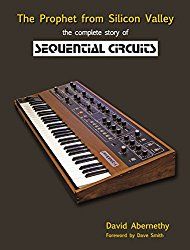
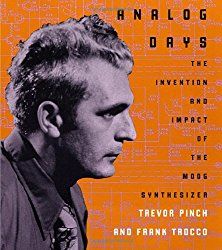
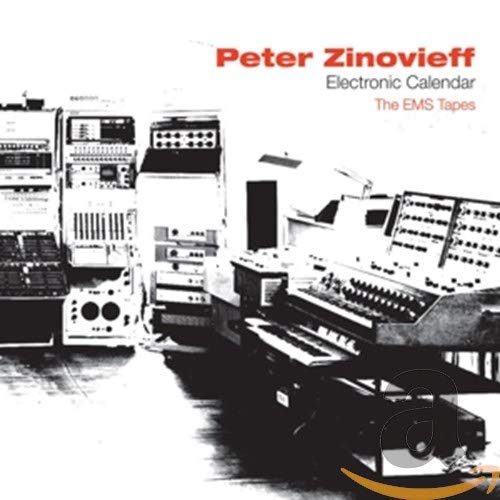
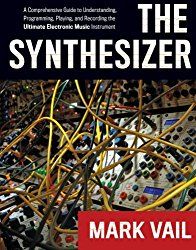
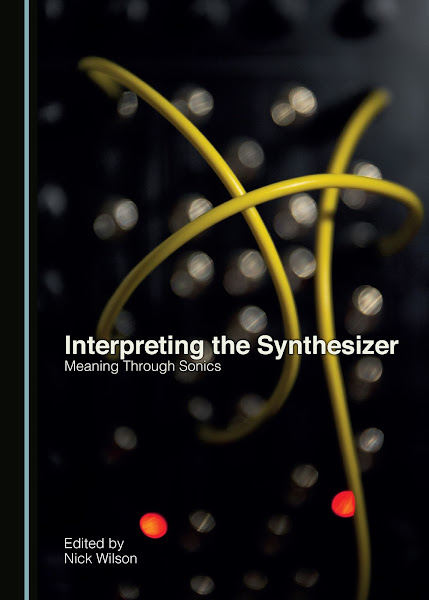
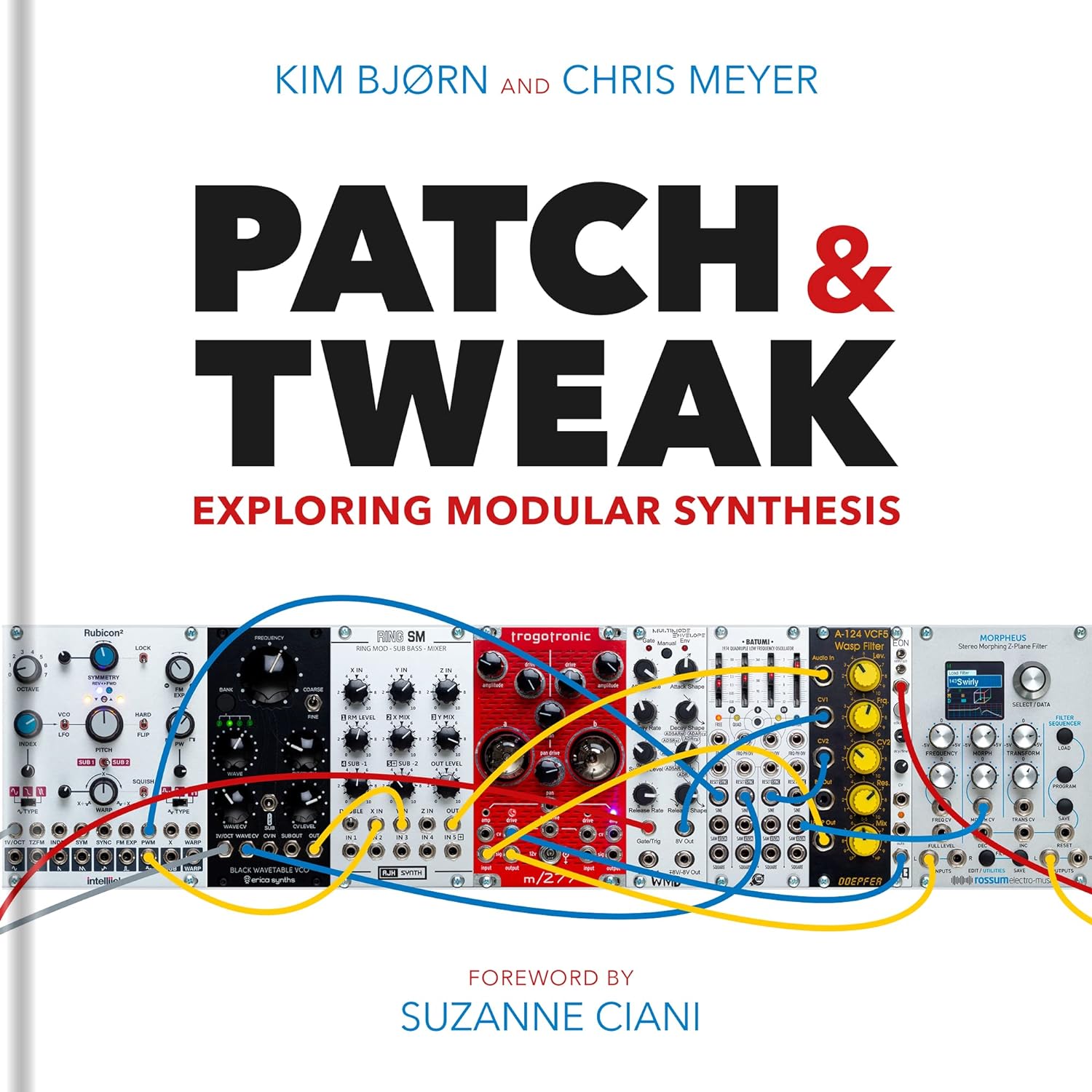

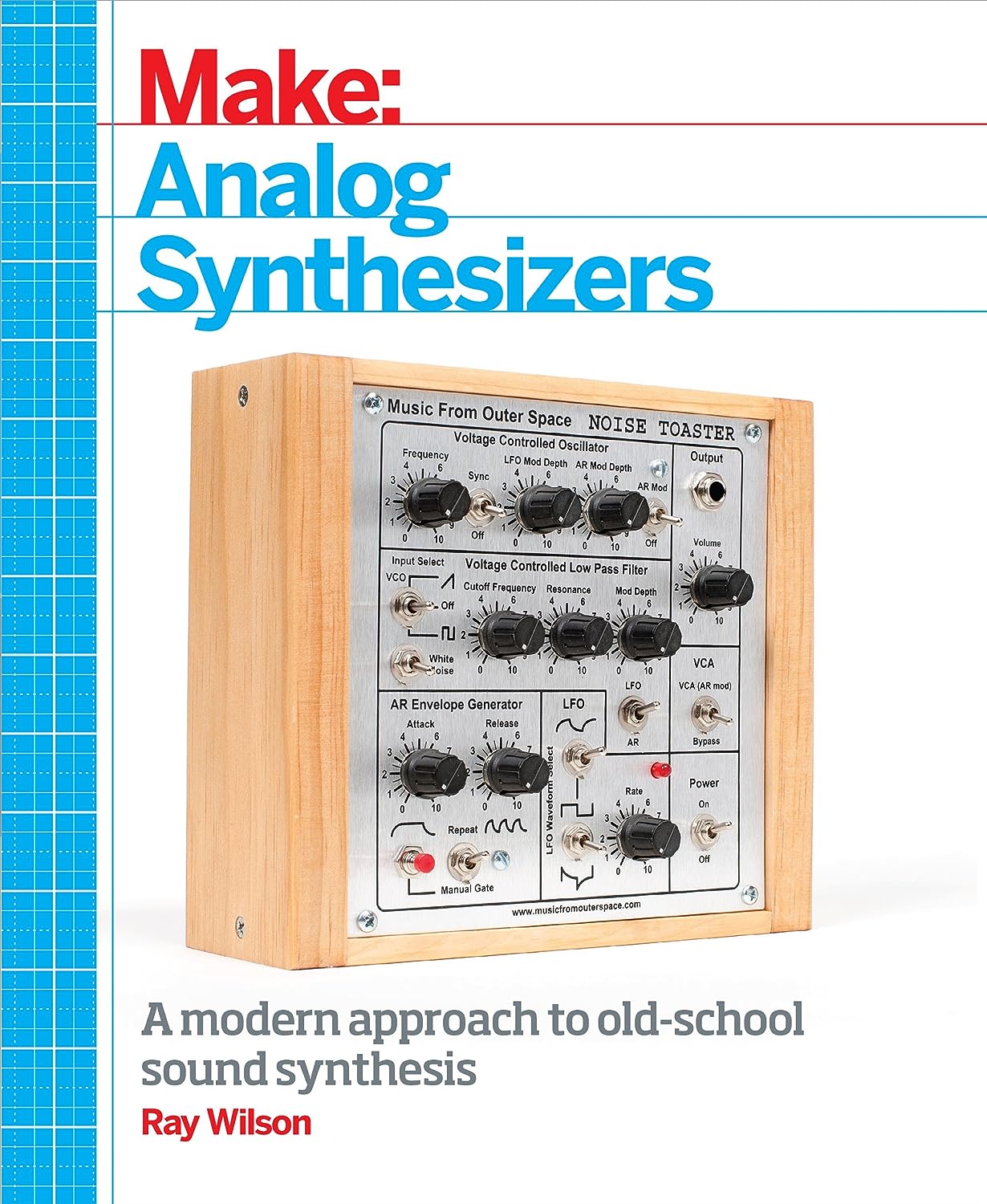
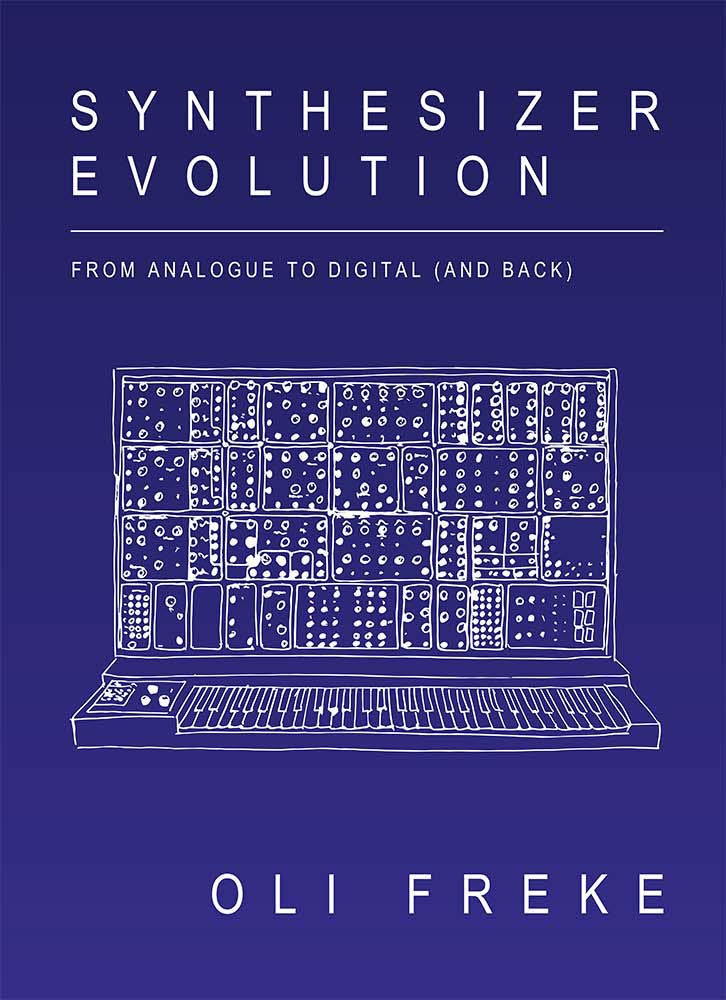
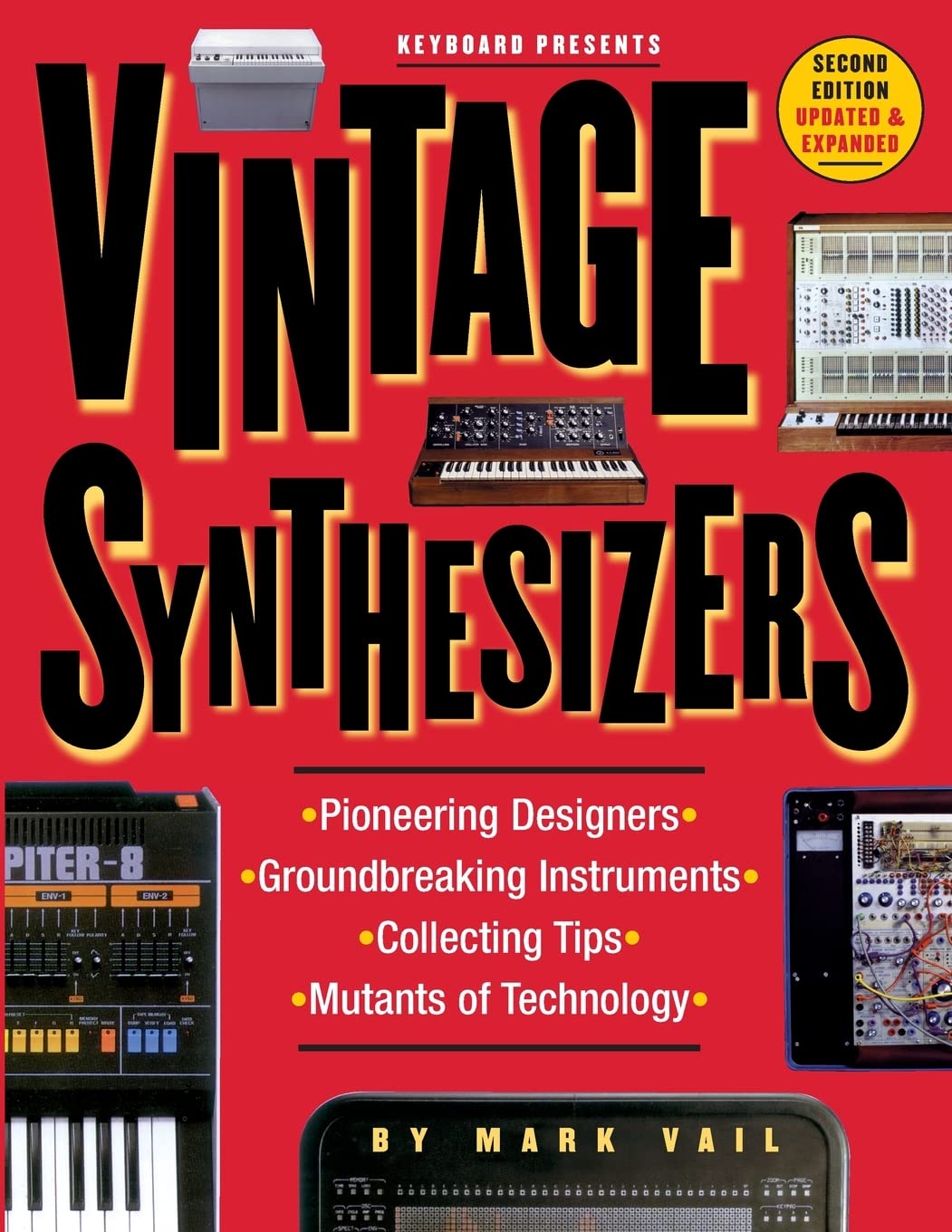
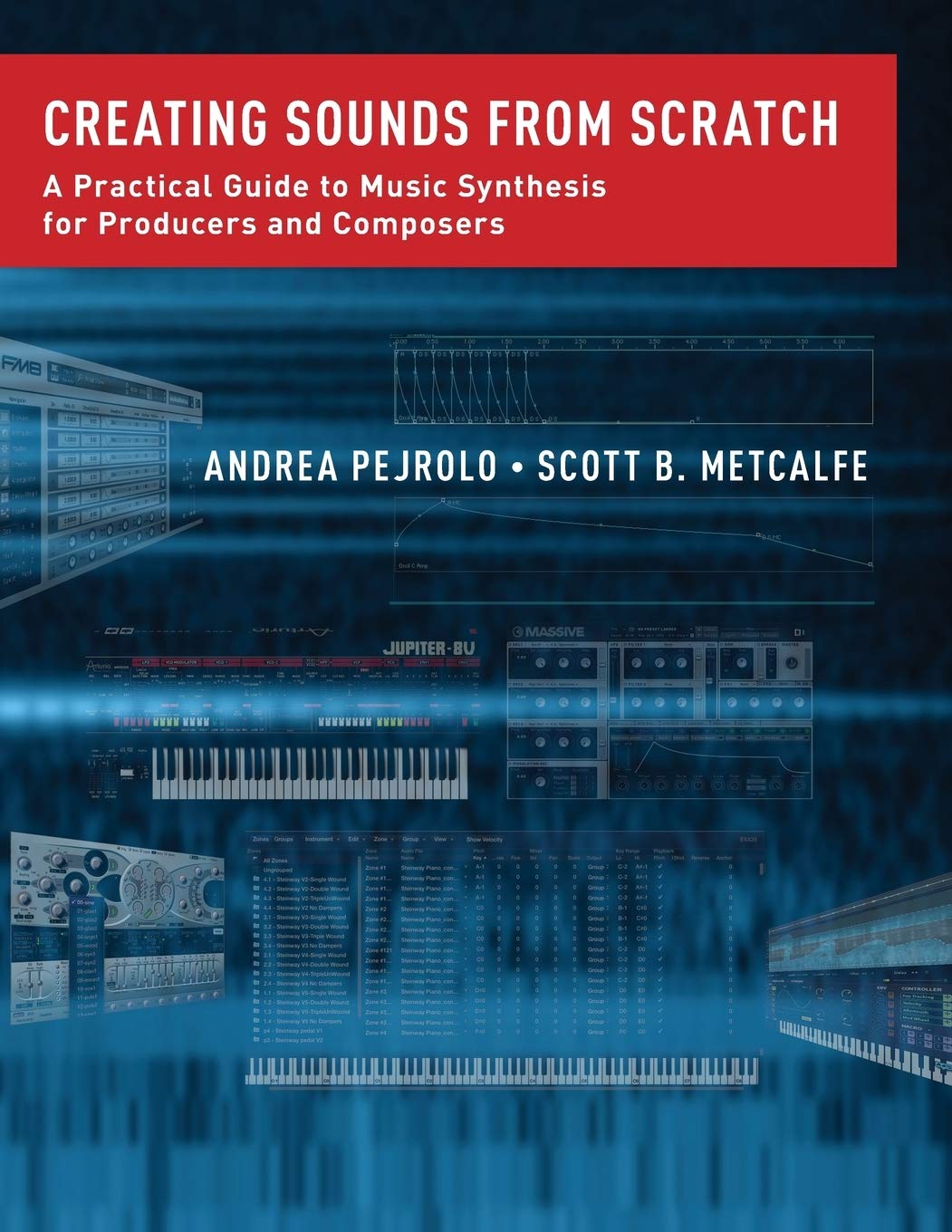
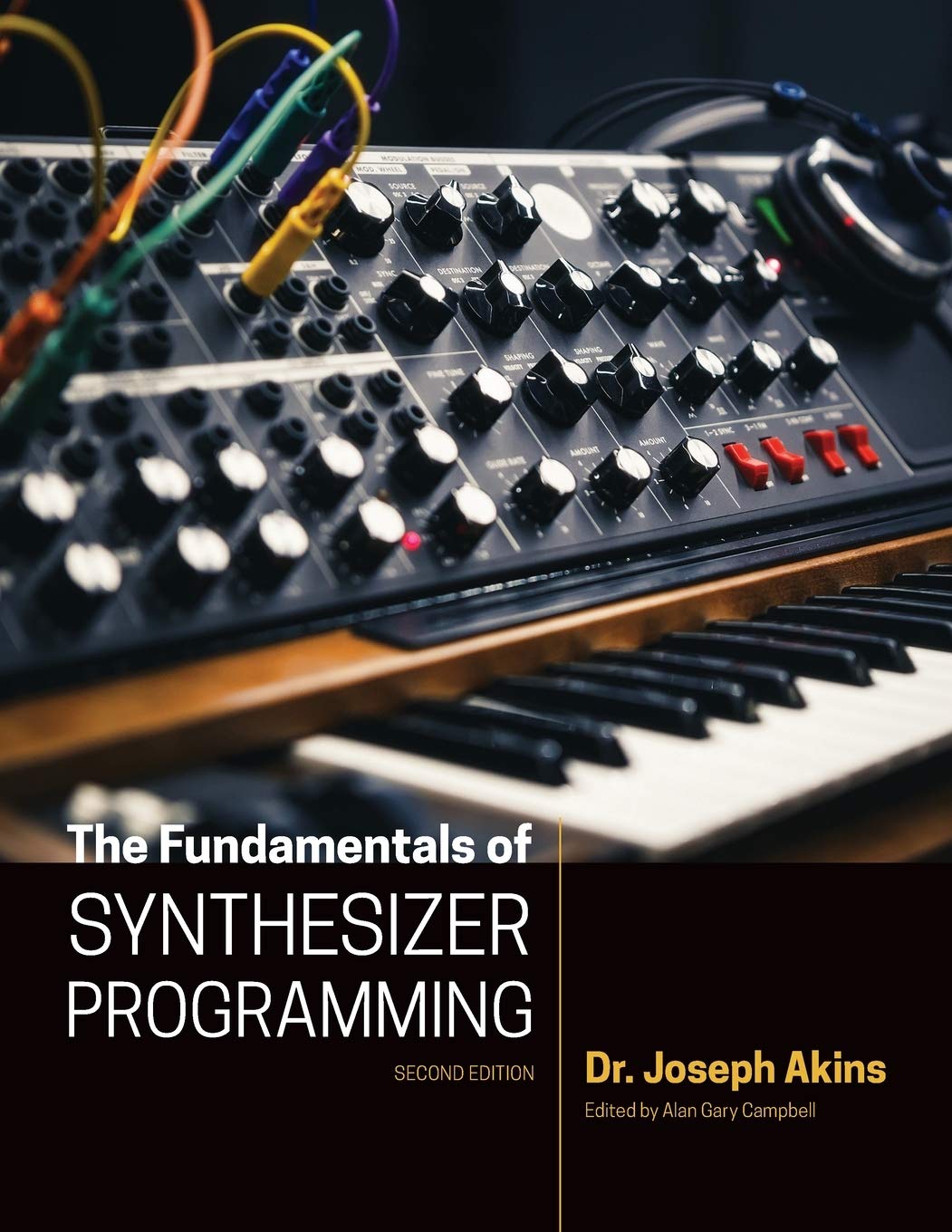

© Matrixsynth - All posts are presented here for informative, historical and educative purposes as applicable within fair use.
MATRIXSYNTH is supported by affiliate links that use cookies to track clickthroughs and sales. See the privacy policy for details.
MATRIXSYNTH - EVERYTHING SYNTH













© Matrixsynth - All posts are presented here for informative, historical and educative purposes as applicable within fair use.
MATRIXSYNTH is supported by affiliate links that use cookies to track clickthroughs and sales. See the privacy policy for details.
MATRIXSYNTH - EVERYTHING SYNTH


















